What flowers look like an orchid
Orchids are houseplants loved by people. But not every person has the opportunity to provide proper care for these flowers. There are less whimsical orchid-like flowers.
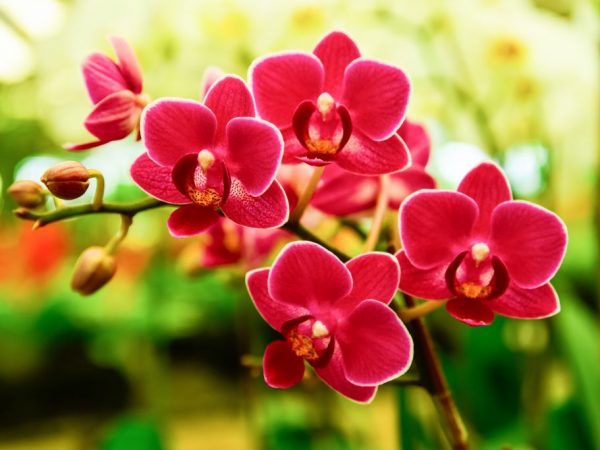
What flowers look like an orchid
Sometimes it can be difficult to distinguish outwardly different types of flowers. Some of them resemble an orchid. They are capable of decorating a room or plot as well. It:
- alstroemeria;
- schizanthus;
- nocturnal;
- iris.
They are used both as indoor crops and to decorate flower beds. To make them bloom faster, it is important to plant them in suitable soil and provide them with proper care.
Alstroemeria
Alstroemeria has another name - "alstroemeria". She seems like a cross between a lily and an orchid.
The plant is popular as a garden decoration. It attracts gardeners for several reasons:
- the desired color, the bush is easy to grow from seeds or prepare seedlings;
- an adult flower is safely propagated by division;
- the flower is planted in the warm period of spring, at the same time when tomato seedlings.
The optimum temperature for the culture in summer is not lower than 23 ° C. The regime of watering and feeding should be observed, then flowering will occur faster and will be of better quality.
Alstroemeria loves loose nitrogenous soil, so it is fed with mineral fertilizers. The soil is loosened before planting. The flower is planted in an open, bright area without the scorching rays of the sun.
In order for flowers cut from a flower bed to stand longer, unopened buds and small leaves are cut off. They will open in a vase, the bouquet will last longer.
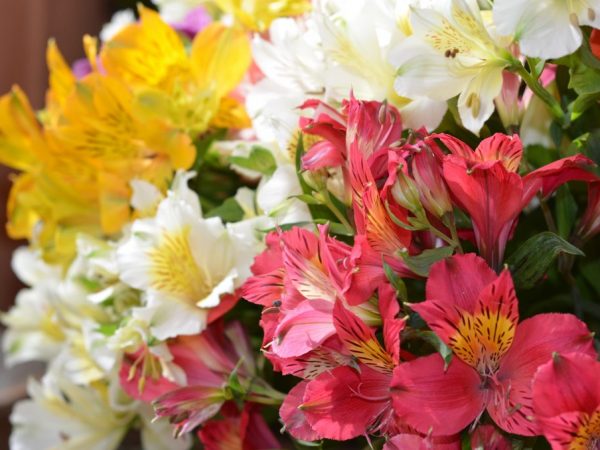
Alstroemeria looks like a lily and an orchid
Schizanthus
This species was called the "poor man's orchid." Schizanthus (another name - schizanthus) resembles varieties from the Orchid family, but itself belongs to the nightshade. It is not often cultivated in home gardens, although it produces a large number of beautiful flowers.
It is also easy to grow from seed if the seedlings are prepared in advance. Already at the end of May, small shoots are planted in open ground.
Schizanthus is suitable for growing and as a houseplant:
- In the summer, it is placed on a ventilated balcony without scorching rays.
- In winter, they bring it into the apartment and leave it at rest for this period.
Schisanthus does not like too moist soil. It reacts to excess moisture with accelerated growth of the stem and the absence of flowering. Excess moisture is also harmful to the root system: it can rot.
Lilac, white or carmine with spots pinnate schizanthus looks like an orchid more than other species. This is an annual flower and will have to be planted annually. In favorable conditions, schizanthus grows so that its flowers cover the leaves.
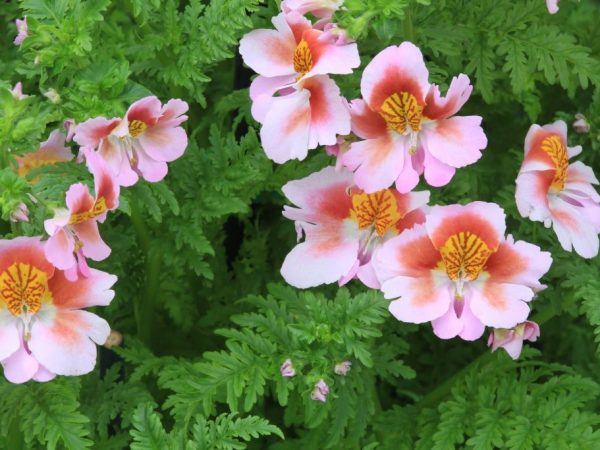
Schisanthus is suitable for growing in the garden and at home
Vechernitsa (night violet)
Vechernitsa got the name "night violet" for its resemblance to violets and because it smells strongly at night. It is a semi-wild culture that grows self-garden or is planted by humans. It is grown in flower beds - it is not a houseplant.
An adult flower has small inflorescences with 4 leaves, a large, well-defined stem, drooping leaves.
Positive qualities of a night violet:
- blooms for a long time - from May to August;
- unpretentious in care, it survives drought and a short cold snap well;
- its seeds take root well in the open field and sprout amicably.
The culture does not require special care: it is enough to water it occasionally, if the drought has lingered, and to weed. She does not need feeding.
Vechernitsa has one drawback: it is a two-year culture, it blooms only in the second year.
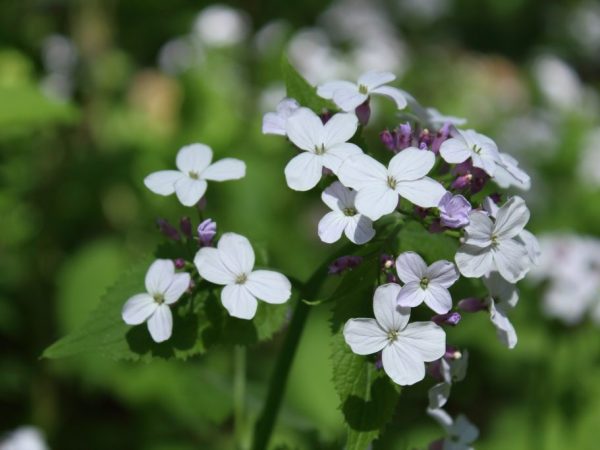
Vechernitsa is grown only in flower beds
Iris
Iris brings together a large number of varieties of different shapes and colors. The flowers are similar to an orchid, only strongly curled and fringed at the edges. Irises are often chosen for growing in the garden, but there are also indoor irises. One of these subspecies is Neomarika.
To achieve spectacular flowering in March, suitable conditions are created for it:
- In the summer they are kept on the balcony, in a bright place, they must be ventilated.
- In winter, they organize a temperature of 8 ° C-10 ° C, put the flower in a dark place for 2 weeks, do not water or fertilize.
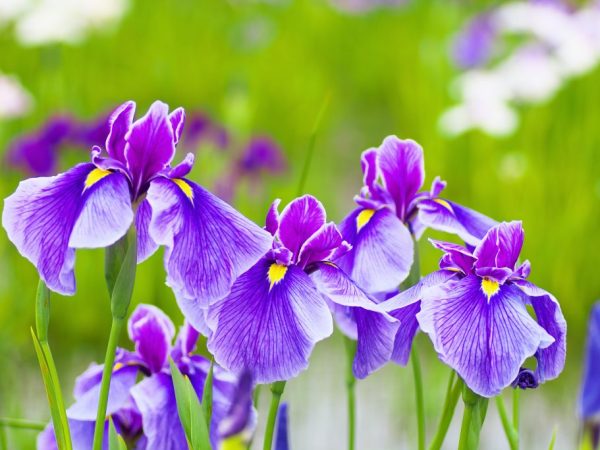
Irises are similar to an orchid, only strongly curled and fringed at the edges
Then Neomarika is transplanted into new soil. She prefers loose and acidic soil saturated with charcoal.
The variety reproduces by peduncles, which are often reborn into a baby.
The long peduncle descends to the soil and takes root on its own. For this reason, the people called Neomarika "the walking iris". In the same way, low-growing bearded irises are grown.
Conclusion
Alstroemeria, schizanthus, night violet, iris Neomarica are cultures that look like orchids. Some of them are grown both at home and in open areas. These are unpretentious plants, so any person can start growing them.
The night violet is a two-year crop, and the walking iris is replanted every year after wintering. In favorable conditions, they bloom no worse than orchids.


